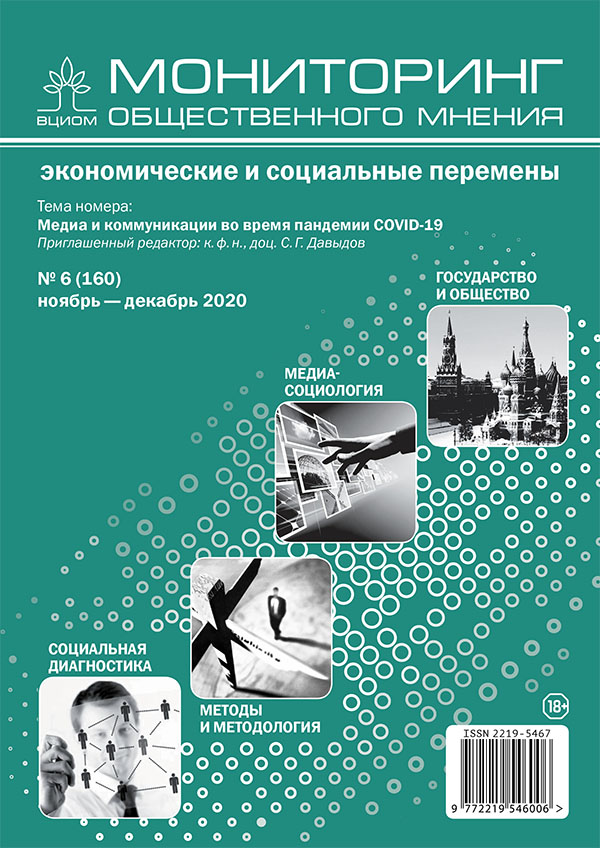Is Russia a Land of Opportunity? It Depends on How You Look at It
DOI:
https://doi.org/10.14515/monitoring.2020.6.1710Keywords:
inequality indexes, income inequality, inequality of opportunity, efforts, circumstancesAbstract
The paper explores how the choice of the inequality measure can affect the results when measuring inequality of opportunities. The analysis is based on the Life in Transition Survey III (2016) conducted by the European Bank for Reconstruction and Development (EBRD). The study also uses the data of the 15th and 20th waves of the Russian Longitudinal Monitoring Survey - Higher School of Economics (RLMS-HSE) representing a series of annual nationwide representative surveys. Calculations were performed ex-ante using parametric method; both direct and indirect assessment procedures were applied. The study reveals that the choice of a particular measure of inequality can have a significant impact on the results when measuring inequality of opportunities. As Gini Index entails maximum discrepancy, and Theil’s L Index entails minimum discrepancy in assessments obtained through direct and indirect methods, it is more favorable to use Theil’s L Index.
Acknowledgements. The study is funded by a grant from the RFBR (project no. 19–010–00453).
Downloads
Published
How to Cite
Issue
Section
License
Copyright (c) 2020 Monitoring of Public Opinion: Economic and Social Changes Journal (Public Opinion Monitoring) ISSN 2219-5467

This work is licensed under a Creative Commons Attribution-NonCommercial-ShareAlike 4.0 International License.






